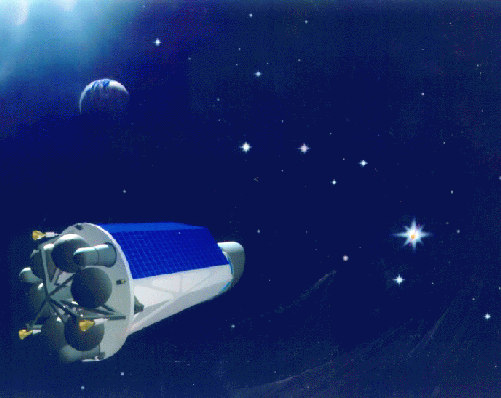
|
Credit & Copyright: Ball Aerospace,
The Kepler Mission,
NASA/Ames Research Center
Explanation:
Observational astronomy has recently
provided evidence of
the existence of
massive Jupiter-sized planets orbiting distant suns,
protoplanetary disks of
gas and dust
surrounding newly formed stars, and
planetary bodies orbiting exotic stellar corpses known as pulsars.
Indeed, the formation of planets seems to be a
broader and more varied phenomenon than previously imagined.
Are there nearby solar systems with Earth-sized planets as well?
Many would answer
yes, but small, relatively low mass planets orbiting sunlike stars - which
might be capable of supporting life - are extremely difficult to detect.
One possible approach to
this daunting observational problem is to regularly
monitor the light from many solar-type stars, searching for the slight
decrease in brightness which signals
the transit of a small planet in front of the stellar disk.
A proposal for a space-based
instrument to engage in such a program,
the Kepler Mission,
is illustrated above.
In this concept, the monitoring space telescope orbits the Sun,
slowly drifting away from Earth.
The goal of this mission would be to
discover Earth-sized planets
in the
habitable zone of solar-type stars, taking
a step toward answering the
profound question
- Does life exist on other worlds beyond our Solar System?
Watch the Leonid Meteor Shower this weekend!
Tomorrow's picture: The Leonid Meteor Shower
|
January February March April May June July August September October November December |
| ||||||||||||||||||||||||||||||||||||||||||||||||
NASA Web Site Statements, Warnings, and Disclaimers
NASA Official: Jay Norris. Specific rights apply.
A service of: LHEA at NASA / GSFC
& Michigan Tech. U.
Based on Astronomy Picture
Of the Day
